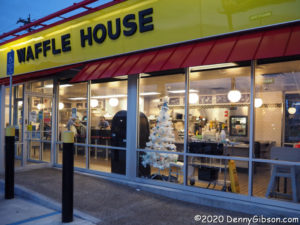 I last spent Christmas in Cincinnati in 2005. I slipped out of town for Thanksgiving that year, and it went so well I did it again in 2006. Then, with a full week available at Christmas, I again hit the road to start a string of December twenty-fifths spent away from home that was unbroken until this year. My 2020 Christmas plans shared the fate of many others: COVID clobbered ’em. Whether or not a new streak is launched next year remains to be seen, but it’s a fact that there is no new Christmas trip journal entry for 2020. In its stead, I’m using the blog to recount the fourteen entries already there. All photos were taken on Christmas Day.
I last spent Christmas in Cincinnati in 2005. I slipped out of town for Thanksgiving that year, and it went so well I did it again in 2006. Then, with a full week available at Christmas, I again hit the road to start a string of December twenty-fifths spent away from home that was unbroken until this year. My 2020 Christmas plans shared the fate of many others: COVID clobbered ’em. Whether or not a new streak is launched next year remains to be seen, but it’s a fact that there is no new Christmas trip journal entry for 2020. In its stead, I’m using the blog to recount the fourteen entries already there. All photos were taken on Christmas Day.
 2006 — Natchez Christmas was organized around a drive of the Natchez Trace Parkway that began the day after Christmas. Christmas Eve and Christmas Night were spent in a room above the Under the Hill Saloon in Natchez, MS. It’s between the two white-fronted buildings in the picture.
2006 — Natchez Christmas was organized around a drive of the Natchez Trace Parkway that began the day after Christmas. Christmas Eve and Christmas Night were spent in a room above the Under the Hill Saloon in Natchez, MS. It’s between the two white-fronted buildings in the picture.
 2007 — I decided to go a bit farther south the next year for Crescent City Christmas. New Orleans had recovered sufficiently from Katrina’s 2005 devastation to welcome tourists to bolster the recovery effort, and it’s a pretty good place to celebrate anything. The tree and Joan of Arc statue are in front of the French Market.
2007 — I decided to go a bit farther south the next year for Crescent City Christmas. New Orleans had recovered sufficiently from Katrina’s 2005 devastation to welcome tourists to bolster the recovery effort, and it’s a pretty good place to celebrate anything. The tree and Joan of Arc statue are in front of the French Market.
 2008 — My great-grandparents spent Christmas on the Alafia in 1920, and I tried to do something similar. I could not camp on the river bank as they did but I could stay in a nearby motel. On Christmas Day, I had breakfast at Showtown USA in nearby Gibsonton. At the time, Showtown still had plenty of carnival people as both employees and patrons.
2008 — My great-grandparents spent Christmas on the Alafia in 1920, and I tried to do something similar. I could not camp on the river bank as they did but I could stay in a nearby motel. On Christmas Day, I had breakfast at Showtown USA in nearby Gibsonton. At the time, Showtown still had plenty of carnival people as both employees and patrons.
 2009 — My retirement in mid-November meant I now had time to drive to US-62’s West End from my most western contact with the route in western Kentucky. After spending a day snowed in in Altus, OK, I reached Lubbock, TX, on Christmas Day and stopped by Buddy Holley’s grave. Lubbock possesses no snowplows so most of the record five inches that fell the day before was still there although much had been blown from the area in the photograph.
2009 — My retirement in mid-November meant I now had time to drive to US-62’s West End from my most western contact with the route in western Kentucky. After spending a day snowed in in Altus, OK, I reached Lubbock, TX, on Christmas Day and stopped by Buddy Holley’s grave. Lubbock possesses no snowplows so most of the record five inches that fell the day before was still there although much had been blown from the area in the photograph.
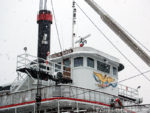 2010 — My Chattanooga Christmas was also a white one. The depth may not have been a record but the fact that this was the first Christmas Day snowfall in Chattanooga in forty-one years meant it was something special. The Delta Queen had been forced to quit cruising in 2009 and was serving as a stationary hotel. I had spent Independence Day 2009 aboard her, and couldn’t resist the chance to spend another holiday on board.
2010 — My Chattanooga Christmas was also a white one. The depth may not have been a record but the fact that this was the first Christmas Day snowfall in Chattanooga in forty-one years meant it was something special. The Delta Queen had been forced to quit cruising in 2009 and was serving as a stationary hotel. I had spent Independence Day 2009 aboard her, and couldn’t resist the chance to spend another holiday on board.
 2011 — Although my path reached as far south as Alabama, Nashville, TN, was the target for George for the Holidays. The title refers to George Harrison whose 1970 album All Things Must Pass was performed by The Long Players on December 23. Oven Master Mary had supplied me with a whole gingerbread family for the trip, and I photographed one family member on stage at Legends Corner.
2011 — Although my path reached as far south as Alabama, Nashville, TN, was the target for George for the Holidays. The title refers to George Harrison whose 1970 album All Things Must Pass was performed by The Long Players on December 23. Oven Master Mary had supplied me with a whole gingerbread family for the trip, and I photographed one family member on stage at Legends Corner.
 2012 — The plans for Christmas Escape Repeat included New Year’s Eve in Raleigh, NC, and some time in Atlanta, GA, but were timed to allow me a second Christmas stay — this time without snow — on the Delta Queen in Chattanooga. It was the first of only two times I used the word “escape” in the title.
2012 — The plans for Christmas Escape Repeat included New Year’s Eve in Raleigh, NC, and some time in Atlanta, GA, but were timed to allow me a second Christmas stay — this time without snow — on the Delta Queen in Chattanooga. It was the first of only two times I used the word “escape” in the title.
 2013 — A Wild and Wonderful Christmas was spent at North Bend State Park in West Virginia where “Wild and Wonderful” is a slogan. After a fine holiday meal at the lodge, I went for a drive that took me to “America’s Oldest Five and Dime” in Harrisville. Berdine’s was not open on Christmas Day but was open the day after so I got to check out this delightful store on my way home.
2013 — A Wild and Wonderful Christmas was spent at North Bend State Park in West Virginia where “Wild and Wonderful” is a slogan. After a fine holiday meal at the lodge, I went for a drive that took me to “America’s Oldest Five and Dime” in Harrisville. Berdine’s was not open on Christmas Day but was open the day after so I got to check out this delightful store on my way home.
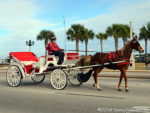 2014 — Christmas Escape 2014 turned out to be quite the escape indeed. There was Christmas Eve with friends in Savannah, GA, Christmas Day with a friend in St Augustine, FL, (where the picture was taken), and some time with an uncle near Lake Alfred, FL, to start the new year. Plus a lot of Dixie Highway and a little time in the keys.
2014 — Christmas Escape 2014 turned out to be quite the escape indeed. There was Christmas Eve with friends in Savannah, GA, Christmas Day with a friend in St Augustine, FL, (where the picture was taken), and some time with an uncle near Lake Alfred, FL, to start the new year. Plus a lot of Dixie Highway and a little time in the keys.
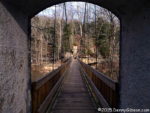 2015 — That WV state park had worked out well in 2013 so I tried out a neighbor on the other side for It’s a Wanderful Life. The holiday meal at Indiana’s Turkey Run State Park was fairly late in the day so I helped my appetite by doing a little hiking before dinner.
2015 — That WV state park had worked out well in 2013 so I tried out a neighbor on the other side for It’s a Wanderful Life. The holiday meal at Indiana’s Turkey Run State Park was fairly late in the day so I helped my appetite by doing a little hiking before dinner.
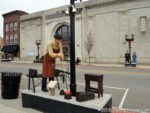 2016 — I stayed fairly close to home and used Ohio’s new tourism slogan for Finding It Here. Home base was the lodge at Burr Oak State Park. A Christmas Day drive took me to the town of Cambridge and a long stroll through the Dickens Victorian Village erected there each year.
2016 — I stayed fairly close to home and used Ohio’s new tourism slogan for Finding It Here. Home base was the lodge at Burr Oak State Park. A Christmas Day drive took me to the town of Cambridge and a long stroll through the Dickens Victorian Village erected there each year.
 2017 — With this trip, I proved that I Can Drive Twenty-Five. I followed the current US-25 from its beginning at the Ohio River to its other end in Brunswick, GA. Holiday dining options were somewhat limited and I ended up with a not so traditional Christmas dinner of crabcake, grits, broccoli, and cookies. In honor of the holiday, I named these four gingerbread men — a gift from Oven Master Mary, of course — Matthew, Mark, Luke, and Ringo.
2017 — With this trip, I proved that I Can Drive Twenty-Five. I followed the current US-25 from its beginning at the Ohio River to its other end in Brunswick, GA. Holiday dining options were somewhat limited and I ended up with a not so traditional Christmas dinner of crabcake, grits, broccoli, and cookies. In honor of the holiday, I named these four gingerbread men — a gift from Oven Master Mary, of course — Matthew, Mark, Luke, and Ringo.
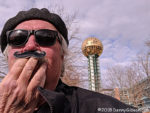 2018 — The focus of Kitty Hawk Holidays was the 115th anniversary of the Wright Brothers’ first flight at Big Kill Devil Hill. That was on the 17th so I did a bit of running around before ending up in Knoxville, TN, on Christmas Day. A selfie in Worlds Fair Park let me show off the new mustache my grandson had given me for Christmas.
2018 — The focus of Kitty Hawk Holidays was the 115th anniversary of the Wright Brothers’ first flight at Big Kill Devil Hill. That was on the 17th so I did a bit of running around before ending up in Knoxville, TN, on Christmas Day. A selfie in Worlds Fair Park let me show off the new mustache my grandson had given me for Christmas.
 2019 — Finding (More Of) It Here had me back in Ohio at a park lodge. This time it was at Geneva-on-the-Lake State Park. The photo was taken just before dinner as the sun set to my left and illuminated the clouds over Lake Erie.
2019 — Finding (More Of) It Here had me back in Ohio at a park lodge. This time it was at Geneva-on-the-Lake State Park. The photo was taken just before dinner as the sun set to my left and illuminated the clouds over Lake Erie.
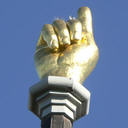 This picture is from my 2006 Natchez Christmas trip. It shows the gilded hand atop the steeple of the First Presbyterian Church in Port Gibson, MS, that mimicks a gesture the church’s founder and first pastor often used in his sermons. The photograph was made while traveling north on the Natchez Trace Parkway after spending Christmas in Natchez, MS. On the way south, I’d spent a night in Clarksdale, MS. My northbound route followed the parkway all the way to its terminus near Nashville, TN, but I slipped off to visit things like the Vicksburg National Military Park, Elvis’ birthplace in Tupelo, and this flying finger of faith in Port Gibson.
This picture is from my 2006 Natchez Christmas trip. It shows the gilded hand atop the steeple of the First Presbyterian Church in Port Gibson, MS, that mimicks a gesture the church’s founder and first pastor often used in his sermons. The photograph was made while traveling north on the Natchez Trace Parkway after spending Christmas in Natchez, MS. On the way south, I’d spent a night in Clarksdale, MS. My northbound route followed the parkway all the way to its terminus near Nashville, TN, but I slipped off to visit things like the Vicksburg National Military Park, Elvis’ birthplace in Tupelo, and this flying finger of faith in Port Gibson.
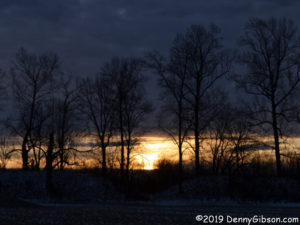
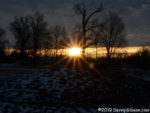
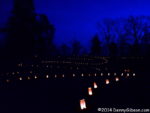
 This History Press publication, as is their standard formula, is built around lots of photos both old and new. In this case, a few of those photos are mine. I won’t pretend that isn’t what made me aware of the book and triggered this review but will point out that the book does fit handily into the local-author-local-subject category that I’m fond of talking about. The local author, Wendy Hart Beckman, isn’t a native Cincinnatian but has spent much of her adult life here. I’m thinking that her New England background might actually help in recognizing what is unique or even just a little different about Christmas in Cincinnati.
This History Press publication, as is their standard formula, is built around lots of photos both old and new. In this case, a few of those photos are mine. I won’t pretend that isn’t what made me aware of the book and triggered this review but will point out that the book does fit handily into the local-author-local-subject category that I’m fond of talking about. The local author, Wendy Hart Beckman, isn’t a native Cincinnatian but has spent much of her adult life here. I’m thinking that her New England background might actually help in recognizing what is unique or even just a little different about Christmas in Cincinnati.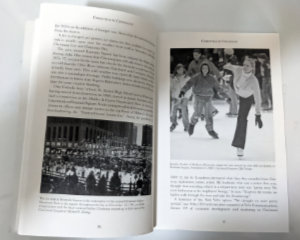 “Things to Do” in Cincinnati around Christmas time include skiing, sledding, and ice skating on Fountain Square. Shopping and visiting Santa in the numerous downtown stores was once a major draw in the days leading up to the holiday but the stores and the shoppers slipped away to the suburbs some time back. In 2020, COVID-19 nearly put a stop to in-person shopping anywhere and only time will tell if it ever fully returns. The same is true of sitting on jolly men’s laps. Beckman includes “Donating” among things to do and writes about several Cincinnati signature campaigns like the Ruth Lyons Children’s Fund and Neediest Kids of All.
“Things to Do” in Cincinnati around Christmas time include skiing, sledding, and ice skating on Fountain Square. Shopping and visiting Santa in the numerous downtown stores was once a major draw in the days leading up to the holiday but the stores and the shoppers slipped away to the suburbs some time back. In 2020, COVID-19 nearly put a stop to in-person shopping anywhere and only time will tell if it ever fully returns. The same is true of sitting on jolly men’s laps. Beckman includes “Donating” among things to do and writes about several Cincinnati signature campaigns like the Ruth Lyons Children’s Fund and Neediest Kids of All.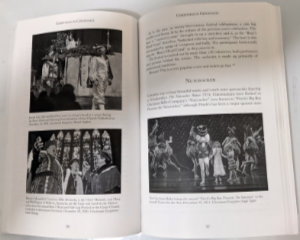 There are indeed plenty of things to do and hear in Cincinnati but there are even more “Things to See”. Beckman lists many Nativity scenes and light displays including some at private residences that have become must-sees over the years. The Cincinnati Zoo’s “Festival of Lights” and the tree on Fountain Square are in that must-see category. What might be considered the big three of Cincinnati Christmas events are on Beckman’s “Things to See” list. The oldest is Boar’s Head and Yuletide Festival which has been celebrated in Cincinnati since 1939. That’s clearly long enough ago to qualify as a true tradition but the festival’s history goes back another 600 years in England. Number two is The Nutcracker which the Cincinnati Ballet Company has been doing since 1974. The newest of the three is Playhouse in the Park’s production of A Christmas Carol which dates to 1991.
There are indeed plenty of things to do and hear in Cincinnati but there are even more “Things to See”. Beckman lists many Nativity scenes and light displays including some at private residences that have become must-sees over the years. The Cincinnati Zoo’s “Festival of Lights” and the tree on Fountain Square are in that must-see category. What might be considered the big three of Cincinnati Christmas events are on Beckman’s “Things to See” list. The oldest is Boar’s Head and Yuletide Festival which has been celebrated in Cincinnati since 1939. That’s clearly long enough ago to qualify as a true tradition but the festival’s history goes back another 600 years in England. Number two is The Nutcracker which the Cincinnati Ballet Company has been doing since 1974. The newest of the three is Playhouse in the Park’s production of A Christmas Carol which dates to 1991.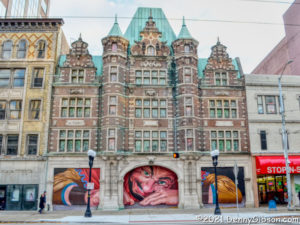
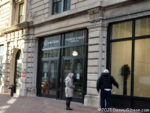






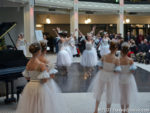
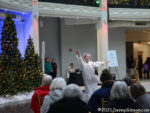



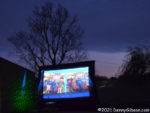
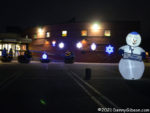
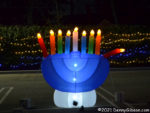
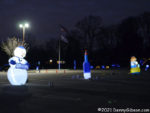
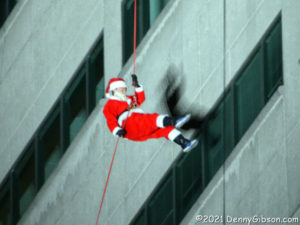

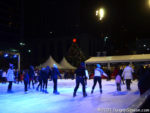

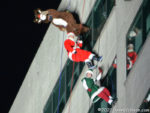

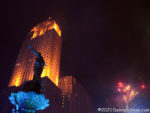

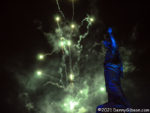









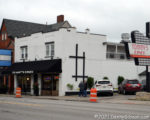

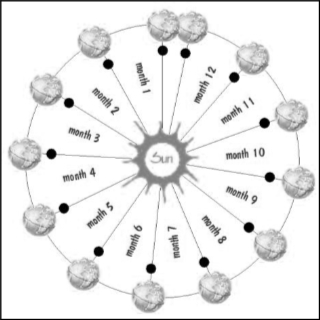 The Jewish calendar is lunisolar meaning it is based on both the sun and the moon. The more common Gregorian calendar is purely solar with no direct lunar involvement. All months of the Jewish calendar start with a new moon. A new moon occurs approximately every 29.5 days so that the Jewish calendar can keep the months pretty much in sync with the phases of the moon by alternating 29 and 30 day months. Of course, 12 X 29.5 is a little short of the 365.24 days that it takes the Earth to circle the sun so every now and then a thirteenth month is added to the year. The timing of these “leap months” is based on a nineteen-year cycle and there are other tweaks as well.
The Jewish calendar is lunisolar meaning it is based on both the sun and the moon. The more common Gregorian calendar is purely solar with no direct lunar involvement. All months of the Jewish calendar start with a new moon. A new moon occurs approximately every 29.5 days so that the Jewish calendar can keep the months pretty much in sync with the phases of the moon by alternating 29 and 30 day months. Of course, 12 X 29.5 is a little short of the 365.24 days that it takes the Earth to circle the sun so every now and then a thirteenth month is added to the year. The timing of these “leap months” is based on a nineteen-year cycle and there are other tweaks as well.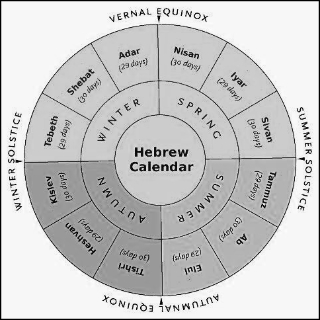 Passover begins on the fifteenth day of the month of Nisan which is the first month after the vernal equinox. Because every month starts with a new moon, the fifteenth of every month is a full moon. Ergo, Passover always begins on a full moon. Being a week long, it always contains a Sunday. Rather than moving Easter away from Passover in 325, the First Council of Nicaea kept the scheduling just the same as it had always been and simply stopped saying the word Passover out loud. Oh wah, tagoo, Siam.
Passover begins on the fifteenth day of the month of Nisan which is the first month after the vernal equinox. Because every month starts with a new moon, the fifteenth of every month is a full moon. Ergo, Passover always begins on a full moon. Being a week long, it always contains a Sunday. Rather than moving Easter away from Passover in 325, the First Council of Nicaea kept the scheduling just the same as it had always been and simply stopped saying the word Passover out loud. Oh wah, tagoo, Siam. 














 I was understandably alarmed when I first saw the news at right. However, reading beyond the headline reassured me that it was only the program planned for Fort Ancient that has been canceled and that the Sun and Earth and other heavenly bodies are to continue as is. The program was held last year and I attended. It was on a Saturday and the following article was published the next day as the regular weekly post. I am reusing it as a regular weekly post 364 days later, a day ahead of the 2020 Winter Solstice which will occur at 5:02 AM December 21.
I was understandably alarmed when I first saw the news at right. However, reading beyond the headline reassured me that it was only the program planned for Fort Ancient that has been canceled and that the Sun and Earth and other heavenly bodies are to continue as is. The program was held last year and I attended. It was on a Saturday and the following article was published the next day as the regular weekly post. I am reusing it as a regular weekly post 364 days later, a day ahead of the 2020 Winter Solstice which will occur at 5:02 AM December 21.